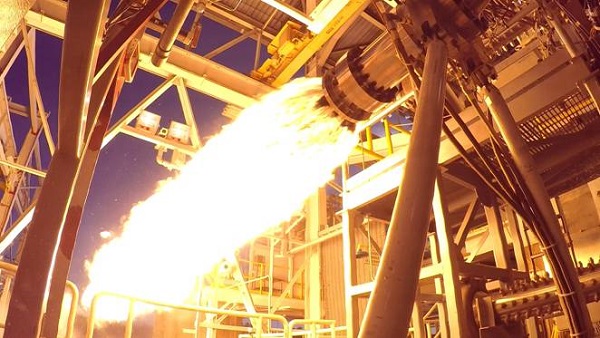 |
| Artist rendition of SLS, Credits: NASA |
Hey fellow rocketeers, in the last article we saw how to derive the most important equation of rocketry - The Rocket Equation. It is a very simple equation yet powerful enough to send humans to space! Jokes aside, the rocket equation also answers another interesting and thought-provoking question from young future-scientists and engineers. If you have seen rocket launches from any space agencies across the world, the most exciting part - for the scientists and us viewers - is Staging. If you don't know what staging is, don't worry, you have seen it too. It is the separation of a rocket stage after that stage has finished its firing.
Many may wonder why such a procedure exists for rockets. Staging is a complex process and a tiny error would make the whole mission go wrong. If so, why do it then? The answer lies in the rocket equation! As we know from the last article, the rocket equation is given as:
The equation says that the delta-V produced is dependent on the exhaust velocity(ve), and the log of ratio of initial total mass to final total mass - ln(m0/mf). For rocket engineers, higher the delta-V, the better. In order to achieve that either the exhaust velocity or mass fraction((m0/mf)) must be increased. And that is where the staging of rockets comes into play!
But before we come to that there's some terms that we have to keep in mind.
- Initial total mass (m0) : This is the total mass of the rocket including all its structural mass, payload mass, and most importantly the mass of the propellant inside it. In simpler terms, just before launch, if u used a humongous weighing scale to weigh your rocket which is all fueled and ready to go, that is called initial total mass. Since we are also including the mass of the propellant, it is also called as wet mass.
- Final total mass(mf): This is the total mass of the rocket without the propellant.
Let us take a simple example to understand this better. Diwali is round the corner and you have a diwali rocket with you. You weigh the rocket before firing it and you get the weight as 200 grams. Just for the sake of simplicity, let us assume 200 grams as the mass. This 200 grams is the Initial total mass or the wet mass. The rocket was launched by lighting its fuse and it falls back to the ground and you weigh it again and get it as 50 grams. The rocket is now empty of its propellant and just has the structural mass to it. So, 50 grams is the final total mass or dry mass.
Why STAGING?
When a rocket is launched the mass of the propellant decreases continuously. If the rocket has multiple stages, each stage would carry fuel separately, so, after the first stage has finished firing, it serves no purpose to any other stages in the rocket or it is what we rocketeers call - dead weight. Engineers thought why should the rest of the rocket carry this weight when we could just dump that finished stage! And that's what we call staging.
At the time of rocket launch, it has a wet mass of m0. After one stage has finished firing, the final mass of the rocket is mf1. However, this final mass can be further be reduced by dropping the whole first stage. This reduces the final mass of the rocket to mf2. By dropping the whole stage, the final mass of the rocket for that phase reduces even more which leads to a very high mass fraction (m0/mf). The mass which is dropped adds a significant amount of delta-V to the rocket which is finally transferred to the payload the rocket carries.
Staging is necessary because the largest contributor to the mass of the rocket is the mass of propellant carried. After burning of this propellant, the structure to hold the propellant is dead weight which can be easily discarded to get a higher delta-V.
Types of STAGING
Yes, there are different types of staging too! Normally two types of staging are followed by space agencies.
- Serial Staging: In this type of staging only one stage is
separated at a time. You can find such stagings in almost all major
launch vehicles where the stages are arranged vertically top on each
other, i.e., in series. This has been the most common type of staging
tracing its roots from the beginning of the modern space race itself.

Saturn - 1B stage separation is an example of serial staging
Credit: NASA - Parallel Staging:
In this type of staging, two or more 'dead-weights' are separated at
the same time. Compared to serial staging, parallel staging is more
complex but that doesn't stop agencies from attempting it. Rockets with
strap-on boosters uses this type of staging to discard the boosters
after they have finished firing.
There are some lesser known staging techniques too like the Stage and a half type of staging. This rare kind of staging was observed in the Atlas-D rockets used by NASA. In this type of staging, the booster engines separates from the core, where the booster is sort of like a skirt around the core. This type of staging is not followed nowadays.
 |
| Stage and a half separation in Atlas-D, Credits: Life |
The next one is not technically a staging process because the rocket doesn't have anything to stage. While all rocket launch vehicles in use are multi-stage rockets, there was a period in time when engineers looked to SSTO - Single Stage To Orbit. These rockets utilize only one stage to reach orbit which is quite an ambitious dream. Some companies are on the run for developing such rockets which could be used to deliver small payloads to orbit.
 |
| SKYLON, a SSTO spaceplane by Reaction Engines Limited |
And that's today's masterclass on staging on rockets. Stay tuned to this space to learn more and do check out our earlier articles on this series.
Rocket Equation!
History of Rocketry - Part 1
History of Rocketry - Part 2







1 Comments
Superb
ReplyDelete